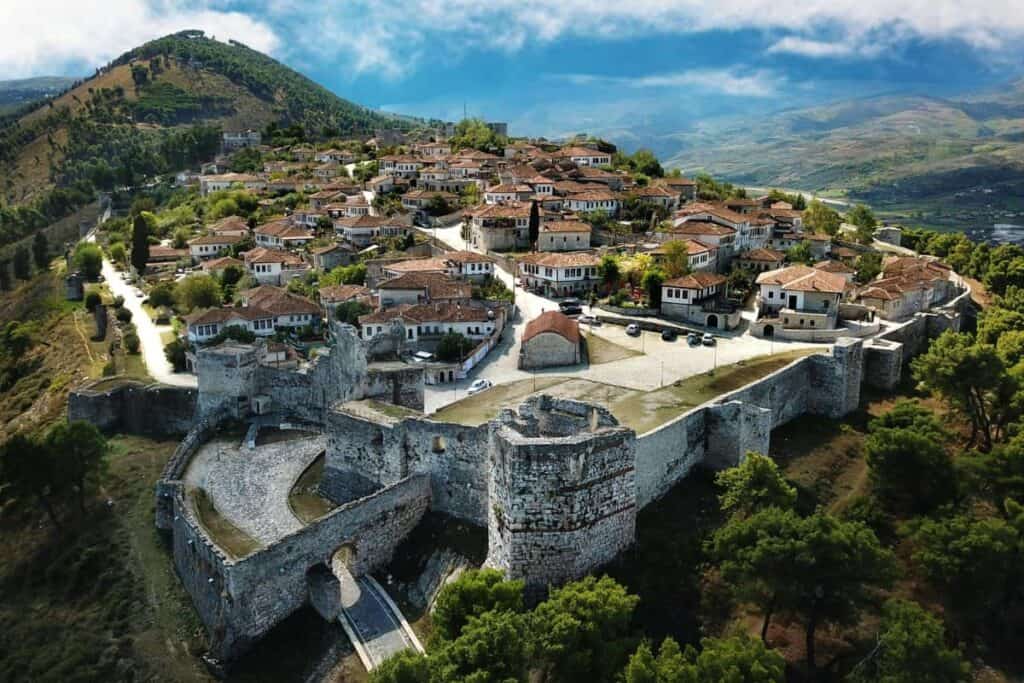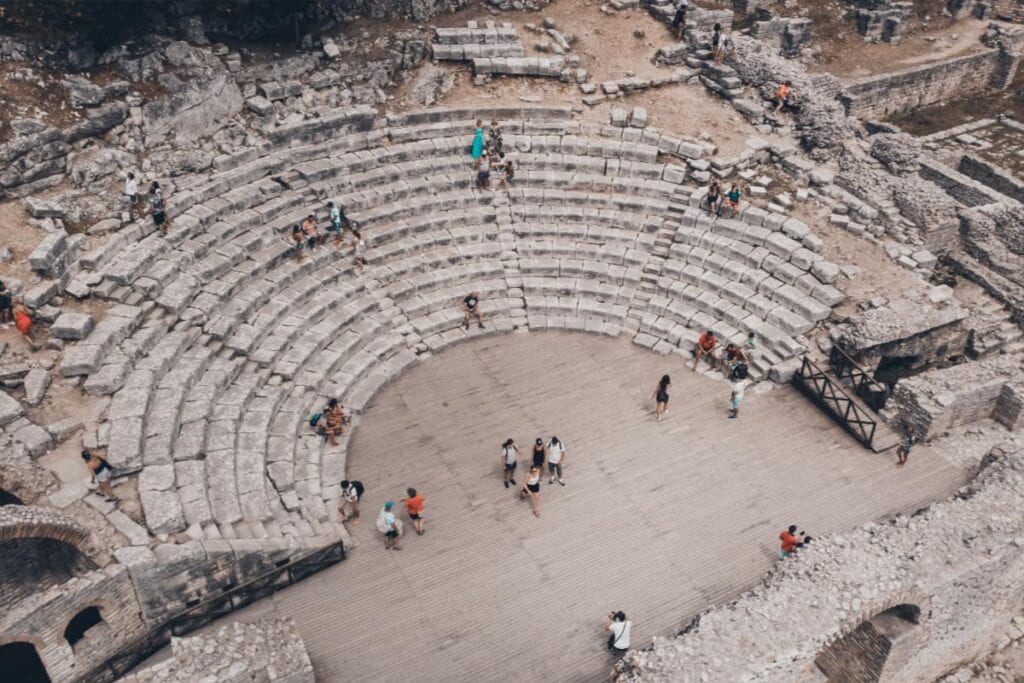Preserving Traditions Through Craftsmanship
In North Albania, centuries-old traditions come to life through the hands of skilled artisans. These crafts not only reflect the culture and history of the region but also offer a tangible connection to its past. From intricate embroidery to handwoven rugs, exploring North Albania’s crafts is an enriching experience for any traveler.
1. Handwoven Rugs and Tapestries
Rug weaving is a revered art form in North Albania, with unique patterns that reflect the region’s cultural heritage.
What to Look For:
- Traditional kilims, are characterized by geometric designs and vibrant colors.
- Tapestries featuring motifs inspired by nature and folklore.
Where to Find Them:
- Artisan workshops in Shkodër and small villages in the Kelmend region.
Why It’s Special: Each rug tells a story, with patterns passed down through generations.
Tip: Visit a workshop to watch artisans at work and learn about the meanings behind the designs.
2. Traditional Embroidery
Embroidery is an intricate craft that adorns everything from clothing to household items in Northern Albania.
What to See:
- Shami e Kuqe (red scarf): A signature piece worn during cultural events.
- Decorated linens and tablecloths featuring floral and geometric patterns.
Why It’s Unique: The precision and artistry of Albanian embroidery are unmatched, with each piece taking weeks to complete.
Tip: Look for handmade pieces at local markets or directly from artisans for authenticity.
3. Woodcarving
Woodcarving is an ancient craft that remains a vital part of North Albanian culture.
Popular Items:
- Intricately carved furniture, such as chairs and chests.
- Decorative items like figurines and wall panels featuring traditional motifs.
Where to Find It:
- Workshops in Tropoja and Tamara, where artisans use locally sourced timber.
Why It’s Valuable: Woodcarving reflects the resourcefulness and creativity of highland communities.
Tip: Commission a small custom piece as a unique souvenir.
4. Felt-Making
Felt-making is a lesser-known craft in North Albania but holds significant cultural importance.
What to Look For:
- Handmade felt rugs and wall hangings.
- Traditional qeleshe (felt caps), are often worn by men in rural areas.
Why It’s Fascinating: This eco-friendly craft uses natural sheep’s wool and traditional techniques.
Tip: Visit a village in the Shala Valley to see the felt-making process firsthand.
5. Pottery and Ceramics
Although less common in the north compared to other regions, pottery is still practiced in select areas, often as part of communal traditions.
What to Expect:
- Clay pots and vases with simple, functional designs.
- Small decorative items inspired by local flora and fauna.
Where to Find It:
- Artisans in Shkodër occasionally showcase their work at local fairs and markets.
Why It’s Unique: The pottery reflects a blend of practicality and artistic expression.
Tip: Ask about the traditional uses of these items to understand their role in daily life.
6. Traditional Costumes and Accessories
Northern Albania is famous for its elaborate traditional attire, often handmade by local artisans.
Key Pieces:
- Women’s dresses featuring colorful embroidery and beadwork.
- Men’s woolen cloaks and leather belts.
Why It’s Important: Traditional costumes are a symbol of identity and are worn during festivals and important events.
Tip: Attend a local festival to see these costumes in action and appreciate their craftsmanship.
7. Ironwork and Metal Crafts
Metalworking has a long history in North Albania, with artisans producing both functional and decorative items.
Popular Creations:
- Hand-forged tools like scythes and axes.
- Decorative pieces, including jewelry and ornamental iron gates.
Where to Find It:
- Villages near Shkodër and Theth, where blacksmiths continue this tradition.
Why It’s Fascinating: The craftsmanship combines practicality with artistry, reflecting the needs of rural life.
Tip: Look for small, transportable items like jewelry or decorative keychains.
8. Basket Weaving
Basket weaving is a practical and artistic tradition in North Albania, often passed down through generations.
What to Look For:
- Baskets made from willow and reed, were used for carrying goods or as decorative items.
- Woven trays and mats, are popular in local households.
Why It’s Special: This eco-friendly craft highlights the sustainable practices of rural communities.
Tip: Visit a market in Kelmend to purchase beautifully crafted baskets directly from weavers.
9. The Role of Crafts in Community Life
In North Albania, crafts are more than just art—they are a way of life. Many artisans combine their work with farming or other trades, making their creations a reflection of their environment and culture.
Why It Matters:
- Buying directly from artisans supports their livelihoods and helps preserve these traditions.
- Each item you purchase carries a piece of Northern Albania’s cultural heritage.
Tips for Exploring Northern Albania’s Crafts
- Shop Locally: Visit markets, workshops, and artisan fairs to find authentic pieces.
- Learn the Stories: Engage with artisans to learn about the history and significance of their craft.
- Support Sustainability: Choose eco-friendly items made with natural or recycled materials.


